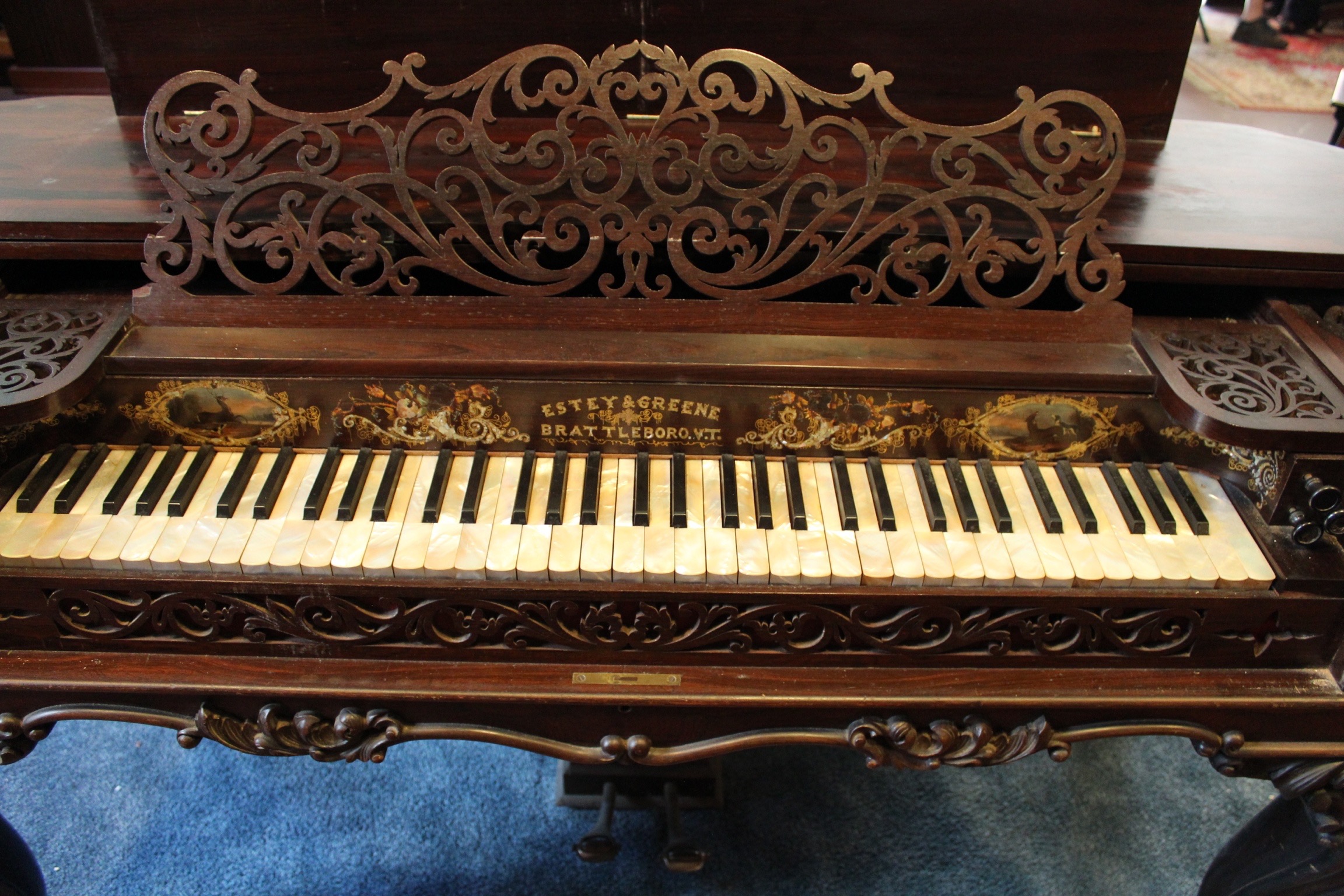

Many of the pipe organs pictured on postcards during the first decades of the twentieth century were new when the cards were issued. Moreover, the image may offer clues to identify the card. Obviously, the card must pre-date the postmark. Other clues may be deduced from the postmark, since a card was often mailed from its place of origin and a date usually accompanies the postmark. Some images are fully identified on the card itself. There are many ways to identify and date postcards. Chrome cards are the type most often found today in souvenir shops. They are published from a color photograph and have a shiny, glossy finish. The final type, called the “chrome” postcard, came into circulation about 1950. Those cards frequently carry high-quality images in keen focus and are eagerly sought by collectors. The most desirable cards dating from the first decades of the twentieth century were actual photographs, published on photographic paper. Those were printed on card stock with high-rag content, but the pressing of a machine gave the impression that the image was printed on linen. About 1930, “linen” post cards first appeared. By 1910, postcards began to be published in color and were immediately mass-produced in huge quantities. This allowed for the message and the address to be written on the back, but freed the entire front of the card for the image. In March 1907, the “divided back” was unveiled. The address was written on the back, and if a message was included, it had to be written on the front of the card beside the image. The earliest, published during the period 1900 to 1910, had a small black and white image on the front, surrounded by a white border. Stated directly, postcards are primary source documents. The research value of old cards is that the subject matter may have changed or disappeared, 4 and the images they display are often not found elsewhere. Postcards are inexpensive, highly collectable, and an entire subculture has evolved around them at “swap meets” and shows of ephemera. The heyday of the postcard was between 19, and one has only to type “postcard” into to locate tens of thousands of cards, covering every imaginable topic the world over. Previously, the United States Post Office held the monopoly. While a few postcards were issued during the nineteenth century, it was not until the United States Congress passed the Private Mailing Card Act of May 19, 1898, that private individuals, companies, vacation destinations, and ecclesiastical organizations were permitted to print and distribute postcards. During the first four decades of the twentieth century, postcards cost a penny to mail, and were often called “penny postcards.” Only the post office can issue postal cards. Postcards differ from postal cards-the latter refers to those “special” cards issued by the postal service with the “stamp” already in place. Cards are often used to convey short messages, share memories of distinctive locations, or advertise events. When mailed, postcards usually have a lesser rate than first-class postage, so they are slightly less expensive to send. An image appears on the front, while the back is bifurcated-a message is written on the left with the address on the right. Cards are usually printed on thick paper or thin cardboard and measure approximately 3½ by 5½ inches. 3 In the thirty-five years since his article appeared, hundreds of organ postcards have surfaced, showing a wide variety of instruments by dozens of American organbuilders.įor context, some fundamentals of postcards may be informative. Sixteen were chosen to illustrate the article. By the time his article was prepared for publication, ten society members had submitted more than a hundred cards. Cognizant of their usefulness for study, Van Pelt challenged the members of the OHS to search local antique and book stores for postcards showing vintage pipe organs. Like fine furniture, painting, sculpture, or any other form of high art, organ cases designed by organbuilders are distinctive and have identifiable characteristics.

2Īn accomplished photographer, Van Pelt had an uncanny awareness of the pipe organ as an entity of visual art. In some cases, a card represents the only remaining record of an organ’s existence. Cards provide the examples we need to study architectonics and the visual evolution of organs, as well as traits of contemporary builders and their instruments. Van Pelt, then the executive director of the Organ Historical Society, wrote in The Tracker: Concomitant to the popularity of photography at the end of the nineteenth century was the blossoming of picture postcards that fortuitously embraced organs and church interiors among a wide range of subjects.


 0 kommentar(er)
0 kommentar(er)
